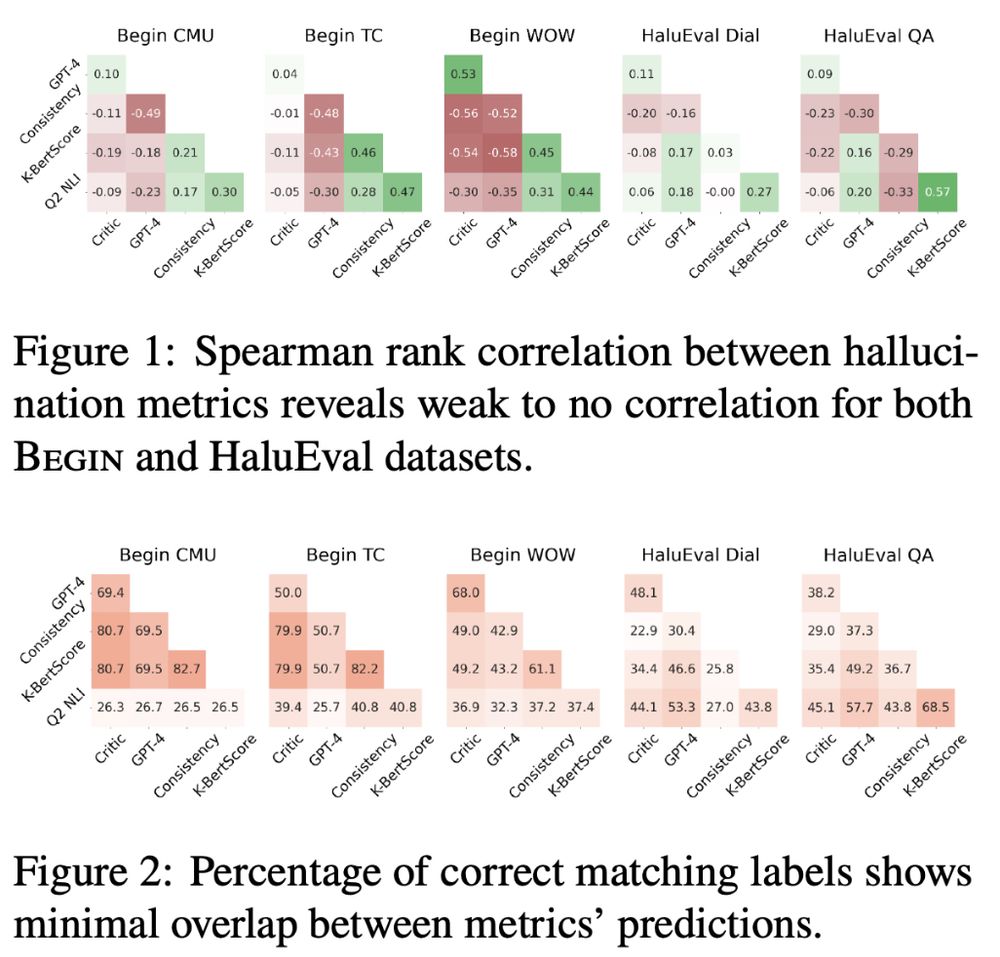https://athrvkk.github.io/
Looking forward to the feedback! 🙂
#LLMs #NLProc
(7/n)
Looking forward to the feedback! 🙂
#LLMs #NLProc
(7/n)
🎯Our work highlights the need for robust, context-aware, and generalizable hallucination detection tools as a prerequisite to meaningful mitigation.
(6/n)
🎯Our work highlights the need for robust, context-aware, and generalizable hallucination detection tools as a prerequisite to meaningful mitigation.
(6/n)
Unsurprisingly, GPT4-based evaluators show the highest reliability with humans across settings 🌟
Using ensembles of multiple metrics is a promising avenue⭐️
Instruction tuning & mode-seeking decoding help reduce hallucinations📈
(5/n)

Unsurprisingly, GPT4-based evaluators show the highest reliability with humans across settings 🌟
Using ensembles of multiple metrics is a promising avenue⭐️
Instruction tuning & mode-seeking decoding help reduce hallucinations📈
(5/n)
⚠️Many existing metrics show poor alignment with human judgments
⚠️The inter-metric correlation is also weak
⚠️The show limited generalization across datasets, tasks, and models
⚠️They do not consistent improvement with larger models
(4/n)


⚠️Many existing metrics show poor alignment with human judgments
⚠️The inter-metric correlation is also weak
⚠️The show limited generalization across datasets, tasks, and models
⚠️They do not consistent improvement with larger models
(4/n)
1. Syntactic and semantic similarity
2. Natural language inference
3. Multi-step question answering pipelines
4. Custom-trained models
5. SOTA LLMs as judge.
(3/n)
1. Syntactic and semantic similarity
2. Natural language inference
3. Multi-step question answering pipelines
4. Custom-trained models
5. SOTA LLMs as judge.
(3/n)
1. Are the metrics capturing the hallucinations effectively?
2. Do they align with each other and the human notion of hallucination?
3. Do they generalize across different settings?
(2/n)
1. Are the metrics capturing the hallucinations effectively?
2. Do they align with each other and the human notion of hallucination?
3. Do they generalize across different settings?
(2/n)

